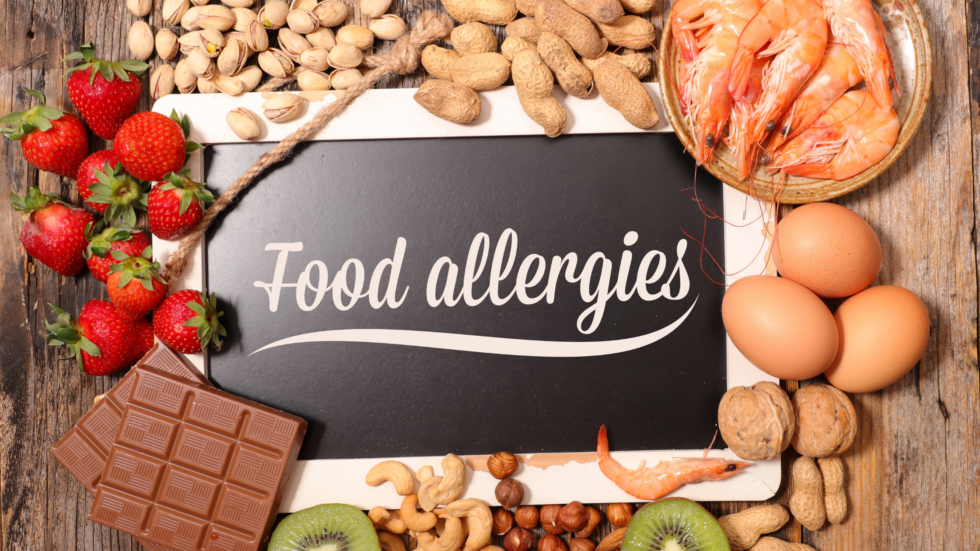Ever eaten something that made you break into rashes? How about itchiness of the throat, around the eyes, your ears, and even your hands and feet? These are actually symptoms of food allergies.
Food allergies are a condition where the body’s immune system becomes hypersensitized. As a result of this hypersensitized state, it mistakenly believes that food entering the body is harmful and creates antibodies to counteract it. So, the next time you eat that food, the immune system releases massive amounts of these antibodies and other chemicals, including histamine, as a protective measure against the “harmful” substance.
The release of these chemicals is what triggers your food allergies to act up. The allergic symptoms could affect any part of the body, but mostly the respiratory system, gastrointestinal tract, skin, and the cardiovascular system. An estimated 11 million Americans suffer from true food allergies, with symptoms ranging from the mildly inconvenient to uncomfortable to complete collapse of major organs of the body, a condition known as anaphylaxis.
2 very common food allergies are gluten (wheat) and peanuts.
Gluten Allergy – Also Known as Celiac disease.
When people with celiac disease eat gluten (a protein found in wheat, rye, and barley), their body mounts an immune response that attacks the small intestine. These attacks lead to damage on the villi, small fingerlike projections that line the small intestine, that promote nutrient absorption. When the villi get damaged, nutrients cannot be absorbed properly into the body.

Celiac disease is hereditary, meaning that it runs in families. People with a first-degree relative with celiac disease (parent, child, sibling) have a 1 in 10 risk of developing celiac disease.
Celiac disease can develop at any age after people start consuming gluten. Left untreated, celiac disease can lead to additional serious health problems.
Peanut Allergy
An allergy to peanuts is among the most common food allergies found in children in the United States. Many schools have declared that they are “nut-free,” meaning that the onetime staple of kids’ lunchboxes – a peanut butter and jelly sandwich – is nowhere to be found on school grounds these days.

Peanuts are not the same as tree nuts (such as almonds, cashews, pistachios, walnuts, pecans and more), which grow on trees. (Though approximately 40% of children with tree nut allergies have an allergy to peanut.) Peanuts grow underground and are part of a different plant family, the legumes. Other examples of legumes include beans, peas, lentils and soybeans. Being allergic to peanuts does not mean you have a greater chance of being allergic to another legume. However, allergy to lupine, another legume commonly used in vegan cooking, can occur in patients with peanut allergy.
Symptoms and Treatment
If you’ve had allergic reactions before, then you probably are already familiar with the symptoms of food allergies. It could range from a tingling sensation in the mouth, the swelling of the tongue and the throat, difficulty breathing, hives, vomiting, abdominal cramps, diarrhea, drop in blood pressure, and loss of consciousness to death. Typically, the symptoms appear within minutes or two hours after the person has eaten the food he or she is allergic to.
The best treatment to food allergies is strict avoidance of foods you have allergic reactions to. There are no medications as of yet that would totally cure food allergies. Your doctor would probably prescribe drugs to treat the symptoms, but as to cure, there is none so far. Epinephrine, also called “adrenaline,” is the medication of choice for controlling a severe reaction.
Most people do outgrow their food allergies. However, peanuts, nuts, fish, and shellfish are considered lifelong allergies. Some research is currently being done in this area and the results look promising.
Still, your best chance of overcoming food allergies is to avoid foods that you are allergic to. It might help if you read ingredient labels for all foods. If the food has no label, you should avoid eating it all together. And if the label contains unfamiliar terms, ask the manufacturer for a definition or avoid eating that food.
Avoidance Method
Having food allergies doesn’t mean that you ought to stop eating foods that you are otherwise not allergic to. Just because you think you’re allergic to something doesn’t mean that you really are allergic. Taking food out of your diet could result in unbalanced diet, which could lead to other health problems. In addition, you may reach a point where you become frustrated because you think that everything you eat causes food allergies.
By avoidance, we don’t mean complete avoidance of foods. Try to keep a food diary where you make a list of all the foods that you’ve eaten for the day and whether or not you suffered any allergies as a result. The information you garner from your list could help you determine exactly what foods trigger what, and could also give your doctor important information about your food allergies.





